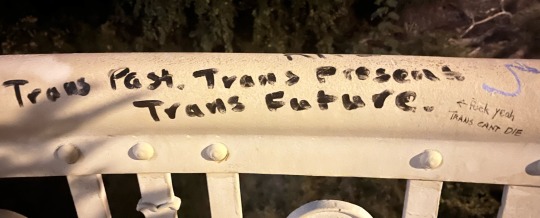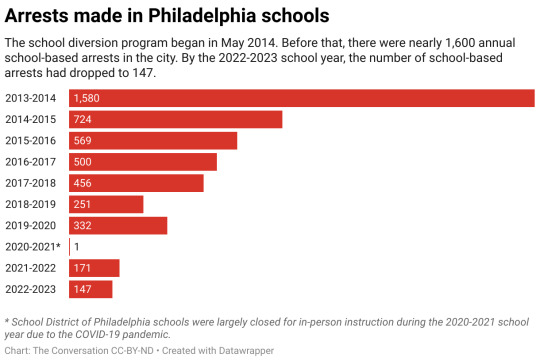#pennsylvania
Text

#petfinder#catfinder#cat#kitten#kitty#dr. professor fluffy bottom!#dr professor fluffy bottom#pa#pennsylvania
576 notes
·
View notes
Text



Oh no, not another morning. How will our hero cope?
431 notes
·
View notes
Text

#!!! :3#:3#mine#photography#photographers on tumblr#original photography#fog#foggy#gray#grey#forest#tree#trees#state park#pennsylvania#digicam#25 notes#50 notes#100 notes
124 notes
·
View notes
Text

An old man sitting patiently on an old iron bed as he waits for mealtime at a poorhouse, Perry County, Pennsylvania, ca. 1952 - by Wallace Kirkland (1890 - 1983), American
82 notes
·
View notes
Text

#florida#maga morons#faux news#shirt#evangelicals#iowa#ohio#meme#rapture#fox#christians#texas#alabama#prophecy#arizona#pennsylvania#trump stinks#trump crime family#republican shit show#republicans#apocalypse
32 notes
·
View notes
Text
Swing-state voters are open to several ideas to keep Social Security benefits flowing for decades — as long as it’s the wealthy footing the bill, according to the latest Bloomberg News/Morning Consult poll.

An overwhelming 77% of registered voters in the seven states that will decide the 2024 presidential election like the idea of a billionaires tax to bolster Social Security shortfalls, the poll found. More than half say they approve of trimming benefits for high-earners, and for taxing wages for Social Security beyond the first $168,600 in earnings as done under current policy.
The poll was conducted among registered voters in Arizona, Georgia, Michigan, Nevada, North Carolina, Pennsylvania and Wisconsin between April 8-15.
Across-the-board changes — raising the retirement age to 69 from 67 or introducing a new formula that results in less generous benefit payments — were less popular. Around one-fourth of poll respondents supported those policies, while about a third support increasing payroll taxes.
The poll demonstrates the difficult task Congress will face in the coming years as it grapples with how to shore up the social safety net program for aging Americans. The Congressional Budget Office estimates that starting in 2034 Social Security recipients will only receive about 75% of their promised payments if lawmakers don’t act.
“A lot of people want the government to take action, but they’re not really sure how,” Matt Monday, a senior manager for Morning Consult, said in an interview. “But the things that they do feel sure about is that someone else should do it,” he said, pointing to the wide popularity of the billionaires tax.
President Joe Biden’s billionaires tax would place a 25% levy on households worth more than $100 million. The plan taxes accumulated wealth, so it ends up hitting money that often goes untaxed under current laws. The president has also proposed higher payroll taxes on those making more than $400,000 as a way to strengthen the Social Security trust fund.
Conversations in Washington about large-scale plans to find new ways to fund Social Security have become more pressing with projections showing the program is becoming increasingly unsustainable. But changes to Social Security are politically risky because older Americans, who are directly benefitting from the payments, are an important voting bloc for both parties.
Benefit programs for elderly Americans are one of voters’ top priorities in November — only the economy, immigration, abortion and protecting democracy were chosen more often when respondents were asked what single issue was most important to their voting decision.
The poll also found that swing state voters trust Biden more than Republican presumptive nominee Donald Trump to preserve Social Security and Medicare, with 45% trusting Biden and 39% trusting Trump.
Trump has not articulated a clear vision for the benefit programs. His campaign website says he will “always protect” Social Security without providing details. In a March interview, he said “there is a lot you can do in terms of entitlements in terms of cutting,” but later walked back that statement, saying he would never do anything to “jeopardize or hurt” the payments for older people.
Republicans in Congress have proposed raising the retirement age and using a new cost of living adjustment metric that would result in lower payments over time. Nikki Haley, who challenged Trump for the GOP presidential nomination, proposed scaling back Social Security benefits for future generations and higher income retirees.
METHODOLOGY
The Bloomberg News/Morning Consult poll surveyed 4,969 registered voters in seven swing states: 801 registered voters in Arizona, 802 in Georgia, 708 in Michigan, 450 in Nevada, 703 in North Carolina, 803 in Pennsylvania and 702 in Wisconsin. The surveys were conducted online from April 8-15. The aggregated data across the seven swing states were weighted to approximate a target sample of swing-state registered voters based on gender, age, race/ethnicity, marital status, home ownership, 2020 presidential vote and state. State-level data were weighted to approximate a target sample of registered voters in the respective state based on gender, age, race/ethnicity, marital status, home ownership, and 2020 presidential vote. The margin of error is plus or minus 1 percentage point across the seven states; 3 percentage points in Arizona, Georgia and Pennsylvania; 4 percentage points in Michigan, North Carolina, and Wisconsin, and 5 percentage points in Nevada.
#us politics#news#yahoo news#bloomberg news#Morning Consult#polling#polls#swing states#Arizona#Georgia#Michigan#nevada#north carolina#pennsylvania#Wisconsin#2024#2024 elections#social security#republicans#conservatives#Democrats#medicare#donald trump#biden administration#president joe biden
20 notes
·
View notes
Text

Graffiti Pier
Philadelphia, Pennsylvania
March, 2024
#photographers on tumblr#lensblr#original photographers#imiging#luxlit#photography#street photography#Graffiti Pier#Philadelphia#Pennsylvania
18 notes
·
View notes
Photo

Layla
#you can#james 1:14#presse#fermento#trans izuku#68140#thankmas#skylovers#pennsylvania#hanson#tour2019#odonnell#mae#televoid#psd#uspol#harry icon
6K notes
·
View notes
Text

“Trans Past. Trans Present. Trans Future.”
“Fuck yeah trans can’t die”
Pittsburgh, Pennsylvania, USA
#trans#graffiti#transgender#lgbt#lgbtq#queer#Pittsburgh#Pennsylvania#USA#trans past trans present trans future#fuck yeah trans can't die#submission
3K notes
·
View notes
Text

Heavenly light
#nature#nature photography#pennsylvania#spring#springtime#bucks county#golden hour#sunshine#sun#sky#tree#trees#blossom#blossoming#pink#spring aesthetic
2K notes
·
View notes
Text

3K notes
·
View notes
Text

Detail from a walk. Maybe I’m losing it but everything looked so lovely yesterday.
301 notes
·
View notes
Text





abandoned village in the woods :3
#!!! :3#:3#mine#photography#photographers on tumblr#original photography#woods#forest#spooky#pennsylvania#digicam#25 notes
31 notes
·
View notes
Text

Late Summer Sun, Philadelphia -- September 13th, 2023
Etsy
1K notes
·
View notes
Text





-monet in bloom, 2022
Phipps Conservatory and Botanical Gardens, Pittsburgh, PA
#monet#monetinbloom#photoshoot#my photos#photography#art#flowers#gardens#university of pittsburgh#Pittsburgh#pennsylvania
4K notes
·
View notes
Text
"Research on a police diversion program implemented in 2014 shows a striking 91% reduction in in-school arrests over less than 10 years.
Across the United States, arrest rates for young people under age 18 have been declining for decades. However, the proportion of youth arrests associated with school incidents has increased.
According to the U.S. Department of Education, K–12 schools referred nearly 230,000 students to law enforcement during the school year that began in 2017. These referrals and the 54,321 reported school-based arrests that same year were mostly for minor misbehavior like marijuana possession, as opposed to more serious offenses like bringing a gun to school.
School-based arrests are one part of the school-to-prison pipeline, through which students—especially Black and Latine students and those with disabilities—are pushed out of their schools and into the legal system.
Getting caught up in the legal system has been linked to negative health, social, and academic outcomes, as well as increased risk for future arrest.
Given these negative consequences, public agencies in states like Connecticut, New York, and Pennsylvania have looked for ways to arrest fewer young people in schools. Philadelphia, in particular, has pioneered a successful effort to divert youth from the legal system.
Philadelphia Police School Diversion Program
In Philadelphia, police department leaders recognized that the city’s school district was its largest source of referrals for youth arrests. To address this issue, then–Deputy Police Commissioner Kevin Bethel developed and implemented a school-based, pre-arrest diversion initiative in partnership with the school district and the city’s department of human services. The program is called the Philadelphia Police School Diversion Program, and it officially launched in May 2014.
Mayor-elect Cherelle Parker named Bethel as her new police commissioner on Nov. 22, 2023.
Since the diversion program began, when police are called to schools in the city for offenses like marijuana possession or disorderly conduct, they cannot arrest the student involved if that student has no pending court case or history of adjudication. In juvenile court, an adjudication is similar to a conviction in criminal court.
Instead of being arrested, the diverted student remains in school, and school personnel decide how to respond to their behavior. For example, they might speak with the student, schedule a meeting with a parent, or suspend the student.
A social worker from the city also contacts the student’s family to arrange a home visit, where they assess youth and family needs. Then, the social worker makes referrals to no-cost community-based services. The student and their family choose whether to attend.
Our team—the Juvenile Justice Research and Reform Lab at Drexel University—evaluated the effectiveness of the diversion program as independent researchers not affiliated with the police department or school district. We published four research articles describing various ways the diversion program affected students, schools, and costs to the city.

Arrests Dropped
In our evaluation of the diversion program’s first five years, we reported that the annual number of school-based arrests in Philadelphia decreased by 84%: from nearly 1,600 in the school year beginning in 2013 to just 251 arrests in the school year beginning in 2018.
Since then, school district data indicates the annual number of school-based arrests in Philadelphia has continued to decline—dropping to just 147 arrests in the school year that began in 2022. That’s a 91% reduction from the year before the program started.
We also investigated the number of serious behavioral incidents recorded in the school district in the program’s first five years. Those fell as well, suggesting that the diversion program effectively reduced school-based arrests without compromising school safety.
Additionally, data showed that city social workers successfully contacted the families of 74% of students diverted through the program during its first five years. Nearly 90% of these families accepted at least one referral to community-based programming, which includes services like academic support, job skill development, and behavioral health counseling...
Long-Term Outcomes
To evaluate a longer follow-up period, we compared the 427 students diverted in the program’s first year to the group of 531 students arrested before the program began. Results showed arrested students were significantly more likely to be arrested again in the following five years...
Finally, a cost-benefit analysis revealed that the program saves taxpayers millions of dollars.
Based on its success in Philadelphia, several other cities and counties across Pennsylvania have begun replicating the Police School Diversion Program. These efforts could further contribute to a nationwide movement to safely keep kids in their communities and out of the legal system."
-via Yes! Magazine, December 5, 2023
#philedelphia#pennsylvania#united states#us politics#school#high school#school to prison pipeline#prison system#arrests#education#students#schools#good news#hope#rare case of police not completely sucking#police#policing#law enforcement
1K notes
·
View notes